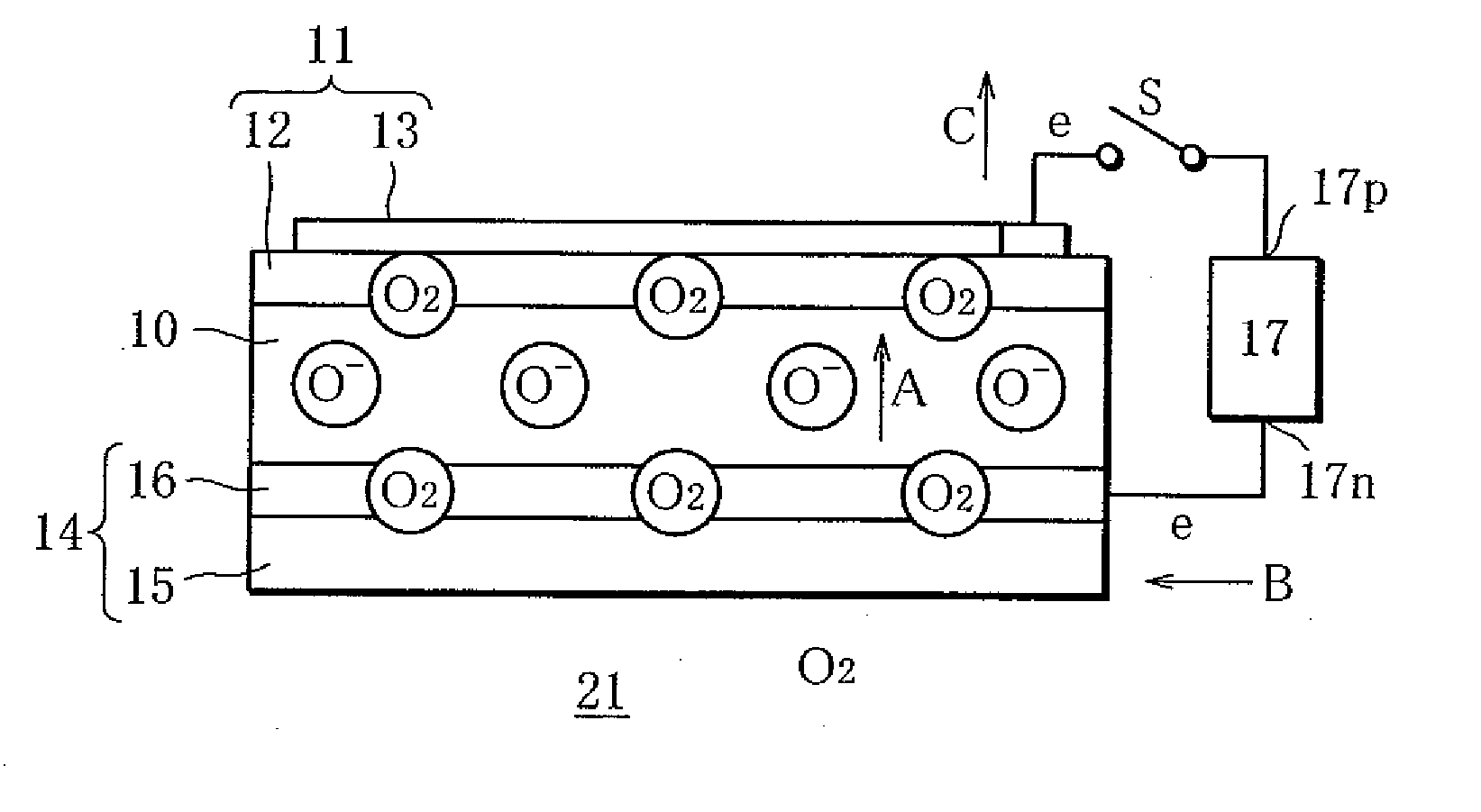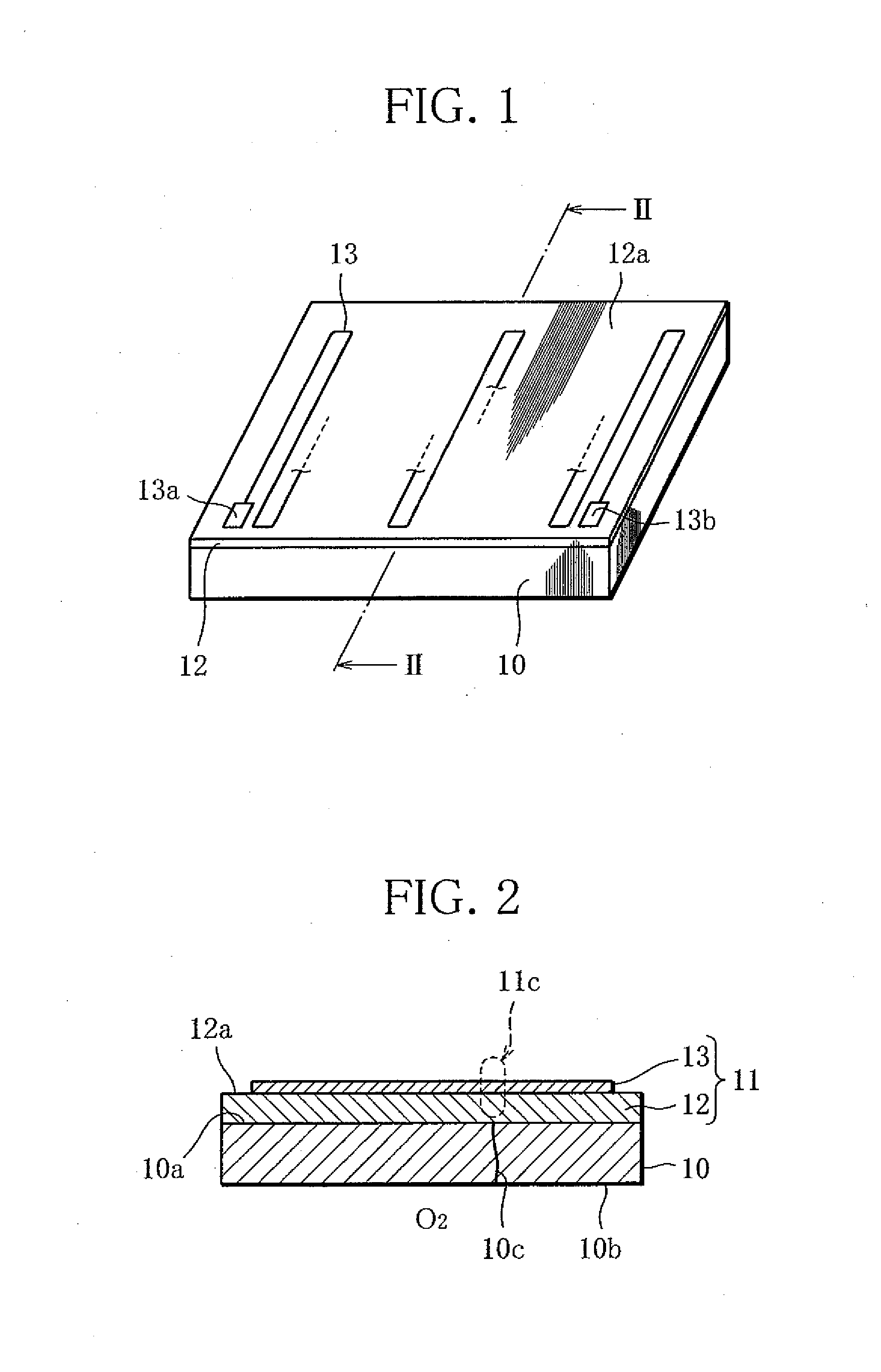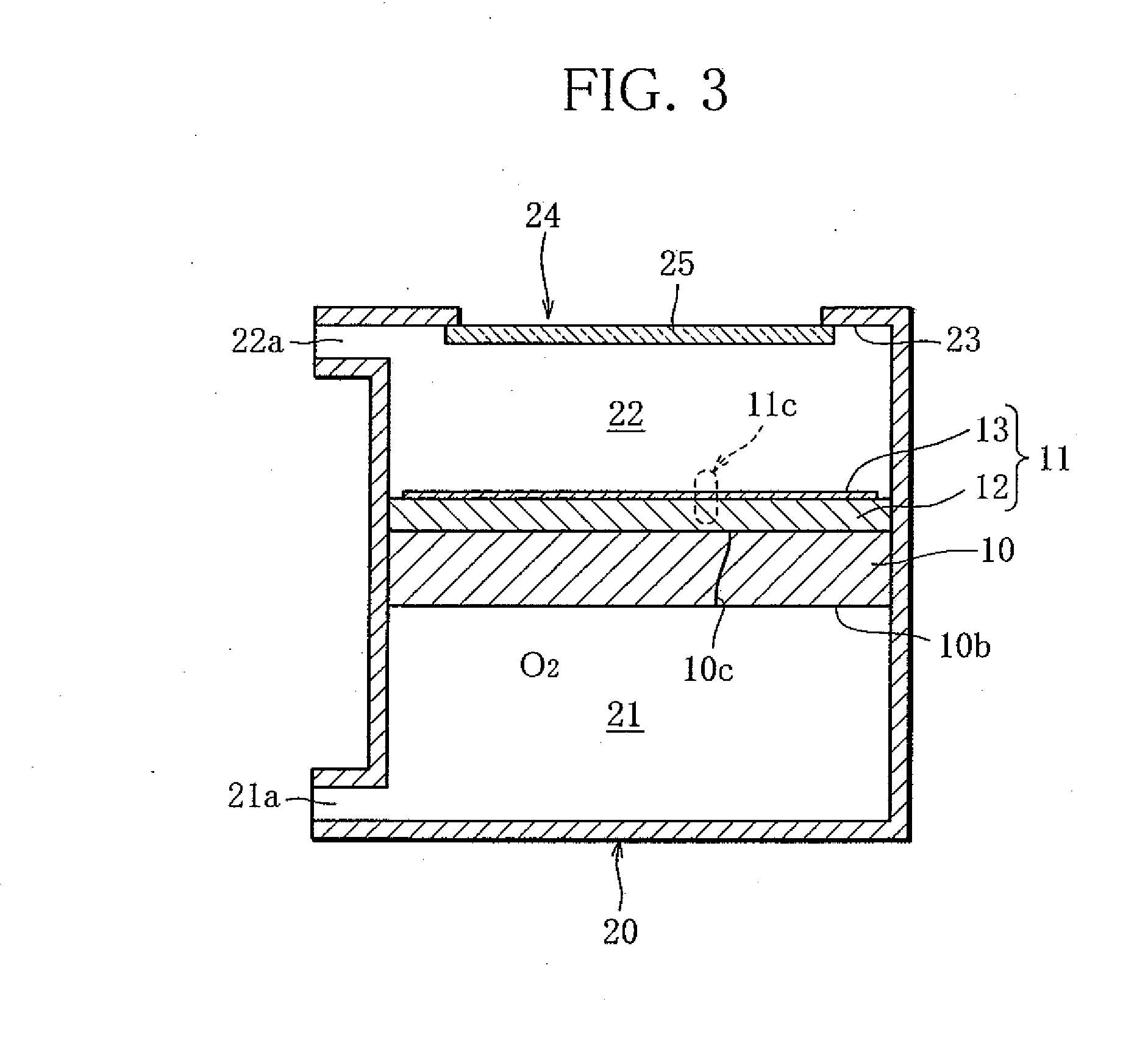Method and Apparatus for Examining Ion-Conductive Electrolyte Membrane
a technology of electrolyte membrane and ion-conductive electrolyte, which is applied in the direction of instruments, cell components, sustainable manufacturing/processing, etc., can solve the problems of reducing the electric power generation capacity, the uniform oxygen ion conductivity of the electrolyte membrane in every region cannot be examined, and the atmosphere does not give the location of the defect, etc., to achieve the effect of increasing the hydrogen ion conductivity of the ion-conductive electrolyte membran
- Summary
- Abstract
- Description
- Claims
- Application Information
AI Technical Summary
Benefits of technology
Problems solved by technology
Method used
Image
Examples
first embodiment
[0038]First, as a method for examining an ion-conductive electrolyte membrane according to the present invention, a method for examining whether or not an ion-conductive electrolyte membrane has a defect, such as a pin hole or a crack, will be described with reference to FIGS. 1 to 3.
[0039]FIG. 1 is a perspective view showing an electrolyte membrane to be examined and a detection membrane joined to the electrolyte membrane. FIG. 2 is a cross-sectional view of the electrolyte membrane, etc. taken along line II-II in FIG. 1, and FIG. 3 is a schematic diagram showing an example of how the electrolyte membrane, etc. shown in FIG. 1 are arranged in a container to conduct examination.
[0040]As shown in FIGS. 1 and 2, a detection membrane 11, equal in planar shape to an electrolyte membrane 10, comprises a catalyst layer 12 and a thin film layer 13. The catalyst layer 12 is joined to a first surface 10a constituting one side of the electrolyte membrane 10, and the thin film layer 13 is form...
third embodiment
[0058]Next, as a method for examining an ion-conductive electrolyte membrane according to the present invention, a method for examining an ion-conductive electrolyte membrane on oxygen ion conductivity will be described with reference to FIGS. 7 to 11.
[0059]FIG. 7 is a perspective view showing an electrolyte membrane to be examined, with a detection membrane and an air electrode each joined to the electrolyte membrane. FIG. 8 is a schematic cross-sectional view showing the electrolyte membrane, air electrode and detection membrane. FIG. 9 is a schematic diagram showing an example of how a power supply circuit is connected between the air electrode and the detection membrane to examine the electrolyte membrane on oxygen ion conductivity, and also giving an explanation of the oxygen ion conductivity of the electrolyte membrane. FIG. 10 is a diagram showing how the resistance of thin film layers is measured by such circuit. FIG. 11 is a schematic diagram showing an example of how an el...
fourth embodiment
[0072]Next, as a method and apparatus for examining an ion-conductive electrolyte membrane according to the present invention, an examination method and apparatus capable of conducting examination of an ion-conductive electrolyte membrane for defects and examination thereof on oxygen ion conductivity in a continuous process will be described with reference to the drawings referred to in the explanation of the above embodiments.
[0073]As shown in FIG. 11, an examination apparatus 30 according to this embodiment is similar in structure to the third embodiment, and examines an electrolyte membrane 10 as shown in FIGS. 7 and 8. Specifically, the examination apparatus 30 comprises a container 20, a power supply circuit 17, a heater Ht, a switch S and an ohmmeter M, as shown in FIGS. 9 to 11. Inside the container 20, a first space 21 (facing an air electrode) 21 and a second space 22 are separated by the electrolyte membrane 10. Heated by the heater Ht, the electrolyte membrane 10 comes to...
PUM
| Property | Measurement | Unit |
|---|---|---|
| thick | aaaaa | aaaaa |
| thickness | aaaaa | aaaaa |
| temperature | aaaaa | aaaaa |
Abstract
Description
Claims
Application Information
 Login to View More
Login to View More - R&D
- Intellectual Property
- Life Sciences
- Materials
- Tech Scout
- Unparalleled Data Quality
- Higher Quality Content
- 60% Fewer Hallucinations
Browse by: Latest US Patents, China's latest patents, Technical Efficacy Thesaurus, Application Domain, Technology Topic, Popular Technical Reports.
© 2025 PatSnap. All rights reserved.Legal|Privacy policy|Modern Slavery Act Transparency Statement|Sitemap|About US| Contact US: help@patsnap.com



